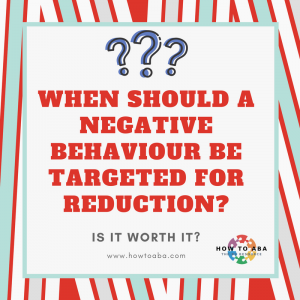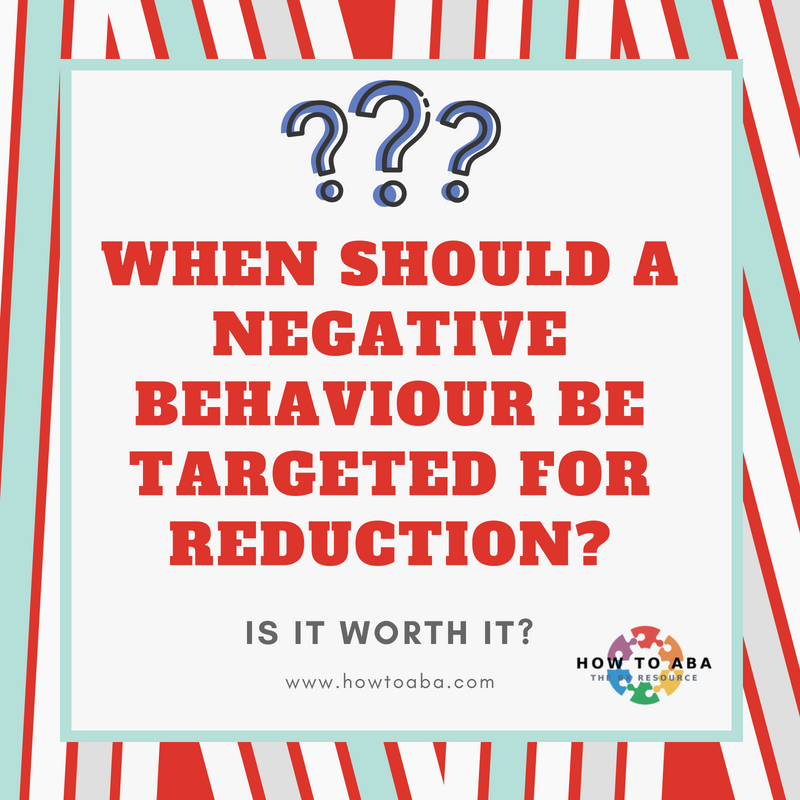 I once worked with a client who was doing really well with his programs, developing skills, and accomplishing goals. However, he had a “behaviour” that was driving his therapist crazy. She called to ask about targeting this specific behaviour within a protocol to try and reduce it. She said that it was coming up often and was getting in the way of his programs.
I once worked with a client who was doing really well with his programs, developing skills, and accomplishing goals. However, he had a “behaviour” that was driving his therapist crazy. She called to ask about targeting this specific behaviour within a protocol to try and reduce it. She said that it was coming up often and was getting in the way of his programs.
What Was The Behaviour?
There were a few words that he refused to say. So instead of saying “cup” he would switch it up for “glass”. Or inside of saying “woman” he would sub in “girl”. There were some language programs he was going through where these words came up a lot and he often used his own substitutions. We don’t know where or how this started. Nor did it matter.
As behaviour analysts, we have to be very careful about calling things “behaviours” when they also might be the little quirks and personality traits that make our clients unique. There are lots of people out there who do things that irritate me – the guy who doesn’t hold the door for the person behind him, the person says “like” way to often when she talks – but we don’t go around waving our magic “behaviour wand” and getting people to stop their annoying habits. We shouldn’t do that for our clients either.
We are not here to “fix” our clients; we’re here to give them the greatest chance at success. Before targeting a behaviour for reduction, check if it meets the following criteria:
1. It must interfere with the child’s learning or the learning of others
If a child is doing something that is preventing him from being part of a classroom or from being successful in his learning environment, it’s worth correcting. For example, a child who is refusing to participate in circle time and screams and cries every time a demand is placed on him may need a protocol to put that behaviour on extinction.
2. It results in self injury or injury to others
The safety of our clients and those around them is of utmost importance. In order for our clients to succeed, we need to get rid of these kinds of behaviour as soon as we see them and replace them with functionally appropriate alternatives.
3. It causes damage to the physical environment
I recently worked with a student who struggled with emotional regulation, especially during transitions. If he wasn’t prepared in advance for a change in schedule, the classroom would look like a tornado hit it – books, toys, and items thrown all over the place. This is not okay and required that we put a proactive intervention strategy in place.
4. It socially isolates the individual
We want our clients to fit in to their community and this can look different for the different cultures and families that we deal with. We need to take this into consideration when looking at behaviour. For example, I once worked with a client who ate with his hands. When I saw this, I was taken aback because he was of an age and skill level where he should be able to use utensils. However, after getting to know his family, I learned that this was how the other members of his family ate – it was part of their culture and background. It is important to consider, though, that when this student goes to school and into other settings, it might be a behaviour that would socially isolate him from others.
5. It gets in the way of independence
I work with a few individuals who are in early adulthood and who are transitioning to living on their own. When issues arise with them, my answer is usually: “How does this affect their independence?” A behaviour only becomes a problem when it gets in the way of them being independent in their home and in their community.
Still think it might be worth targeting or are you unsure? The first step in any plan would be to collect data, so we recommend starting there. It gives you some useful information on what’s happening (and how often). You may see that it’s not happening often enough to be worth targeting.
Starting to collect data makes others feel invested in making a positive change – sometimes that’s all you need!
For more information on our ethical responsibilities and behaviour reduction, check out the BACB code of ethics: www.bacb.com/ethics/ethics-code/
Watch our YouTube video on targeting a behaviour for reduction here!



I love this explanation of behavior. Do you have any advice for when your supervisor thinks one of your patients still needs things targeted, but they are just his/her personality traits and you don’t believe it needs to be targeted?
Hmmm, that’s tough. Try speaking to your supervisor about what a replacement behaviour would be – any time a behaviour is put on reduction, there should be something to replace it with that accomplishes the same function. Sometimes, thinking about the replacement behaviour makes you realize that it’s not really worth targetting (eg: our client had already come up with his own functional replacement!).
Pingback: Writing a Behaviour Intervention Plan (BIP) - How to ABA
Pingback: How To Do A Functional Behaviour Assessment - How to ABA